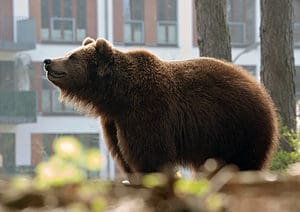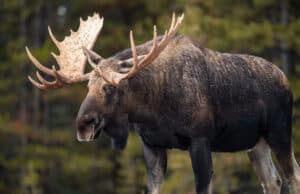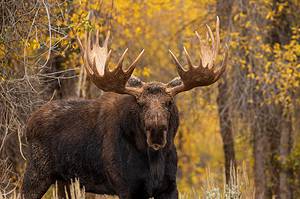A moose, Alces alces, can run at a top speed of up to 35 miles per hour, or approximately 56 kilometers per hour. The average moose cannot maintain that top speed for long. However, they can keep up a steady running speed over long distances of about 22 miles per hour, or around 35 kilometers per hour. Despite their knobby knees and gangly appearance, these large animals can move quite fast. Let’s learn more about moose, where they live, how fast they can run as compared to other animals, and a few more fun facts.
The Plural of Moose
Since we’re learning interesting facts, what do you call it when you have one moose and add a second moose? Is it mooses? Meese? No, the plural of moose is just moose. You can remember this easily if you just recall that moose and deer work the same way. One deer, two deer. One moose, two moose.
Moose Are Huge Deer
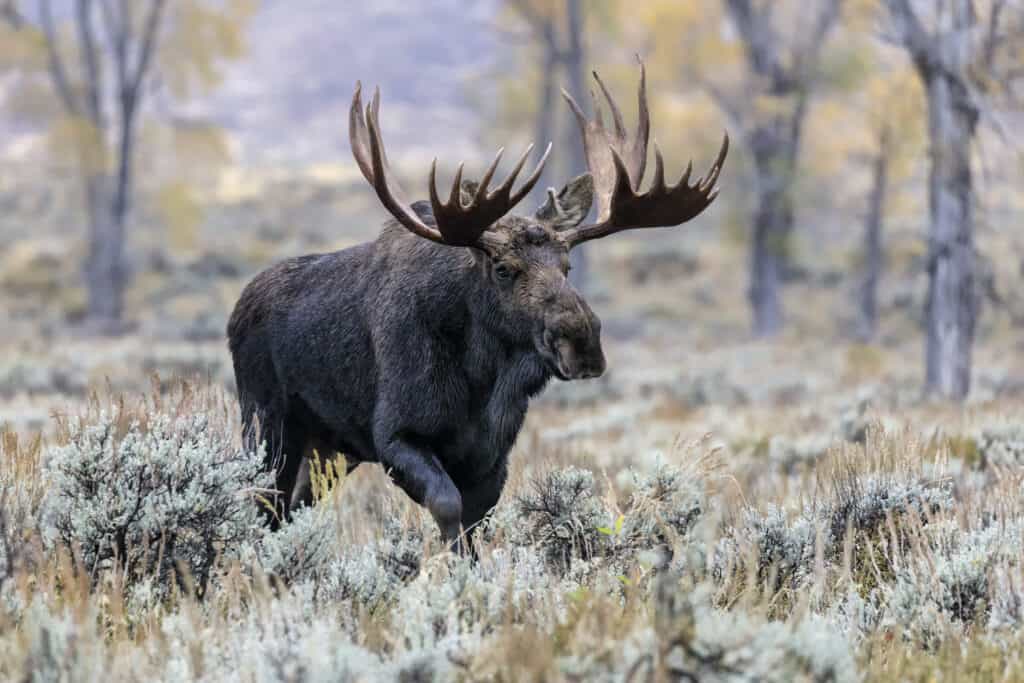
A large bull moose can stand nearly 7 feet tall at the shoulder.
©David Osborn/Shutterstock.com
Moose are the largest living species of deer in the world. True deer, including the moose, belong to the Cervidae family of hoofed ruminants. Dozens of deer species exist around the world, but none come close to the size of a moose. An adult male moose can stand nearly 7 feet tall at the shoulder and weigh more than 1,500 pounds. Even an average-sized moose stands roughly a foot taller than the next largest deer in North America, the elk or the wapiti.
Moose Have Bovine Names
Although moose are deer, they are not called bucks and does. Instead, we call an adult male moose a bull, and we call an adult female moose a cow. We call young moose calves, whether male or female.
Moose in Europe and Asia Are Called Elk
In Europe and Asia, the animal known as a moose in North America is called an elk, or sometimes a Eurasian elk. The North American animal known as an elk is known in Europe and Asia as a wapiti, a name taken from Native American languages. Both animals belong to the Cervidae family of deer.
Where Do Moose Live?
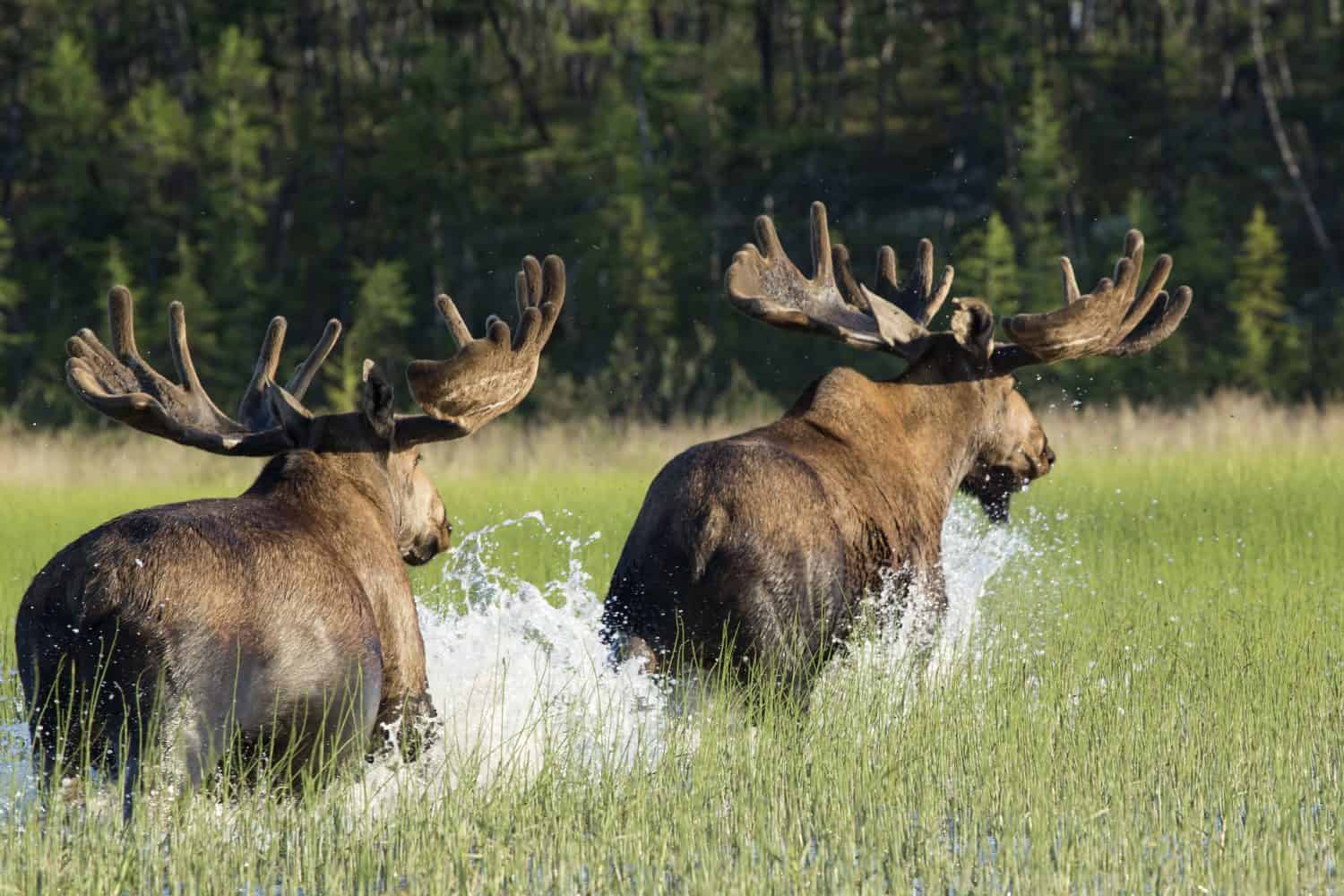
Moose live in a wide variety of habitats, including forests, fields, swamps, and wetlands.
©Olenyok/Shutterstock.com
Moose live throughout Alaska and Canada. They also live in the northern United States, through the Rocky Mountains as far south as Colorado, around the Great Lakes region, and in New England, north of Boston. Moose also inhabit Europe and Asia, from the Nordic region as far south as the Czech Republic and east throughout most of northern Asia.
The moose population has increased in recent years over much of its range. Much of the success of this species depends on its ability to adapt to different conditions. Moose thrive in a variety of habitats, from forests and fields to swamps and other wetlands. They live everywhere from the Arctic tundra to boreal forests and even warmer temperate zones. They do well in mountains and lowlands alike. And perhaps most importantly, they do exceptionally well in secondary forests, where logging or fires have cleared the original forests making way for new growth.
How Fast Can Moose Run, Compared to Other Deer?
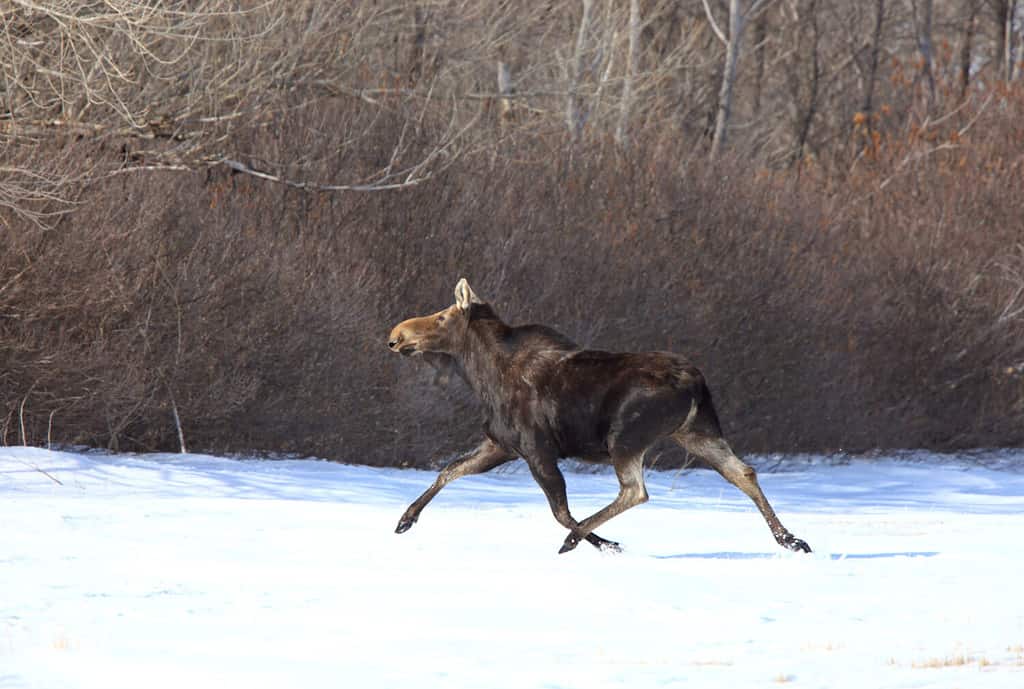
Moose may not be the best runners among deer, but they are still fast on their feet.
©Pictureguy/Shutterstock.com
Moose do not stand out among deer when it comes to speed. With a top speed of 35 miles per hour, moose can run fast, but not as fast as many other deer. Both mule deer and North American elk, or wapiti, can reach top speeds of approximately 45 miles per hour. White-tailed deer, with more than two dozen subspecies, can reach top speeds from 35 to 45 miles per hour. Meanwhile, caribou, also known as reindeer, can virtually fly over their cold, northern habitat, reaching top speeds of up to 50 miles per hour.
Can Moose Run as Fast as Their Predators?
Moose are very large animals, but they have several predators. Predators include gray wolves, Arctic wolves, brown or grizzly bears, North American black bears, cougars, Siberian tigers, and rarely, wolverines. Many of the predators listed above tend to prey on younger, smaller moose rather than large bulls. That means the moose that become prey probably never reach the top speed for the species. But let’s take a look at how a fully grown, speedy moose would fare against their most common predators.
Moose Speed vs. Common Predator
| Predator | Top Speed |
|---|---|
| Wolverine | Up to 30 miles per hour |
| North American Black Bear | 30 to 35 miles per hour |
| Brown or Grizzly Bear | 35 to 40 miles per hour |
| Gray or Arctic Wolf | 35 to 40 miles per hour |
| Cougar | 40 to 50 miles per hour |
| Siberian Tiger | 40 to 60 miles per hour |
Clearly, a moose has little chance of beating the top speeds of most of its predators. However, these animals cannot sustain their top speeds for a long time. A strong, healthy moose with a good head start may be able to outrun a predator over a long distance.
How Fast Do Moose Swim?
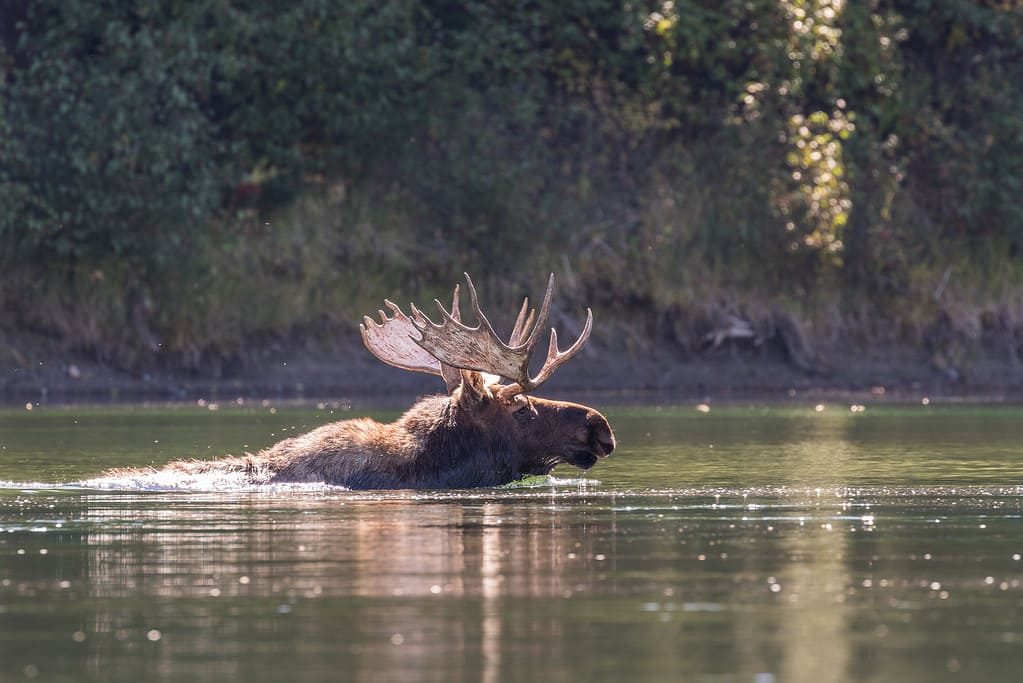
Moose can swim up to 6 miles per hour for long distances.
©twildlife/iStock via Getty Images
Moose can swim approximately 6 miles per hour for long distances. Unfortunately, they occasionally face yet another formidable predator in the ocean. Orcas also sometimes prey on moose when they swim from one island to another. Orcas can swim up to 35 miles per hour, meaning a moose has little chance of surviving an attack away from the shore.
The photo featured at the top of this post is © JacobLoyacano/Shutterstock.com
Thank you for reading! Have some feedback for us? Contact the AZ Animals editorial team.




